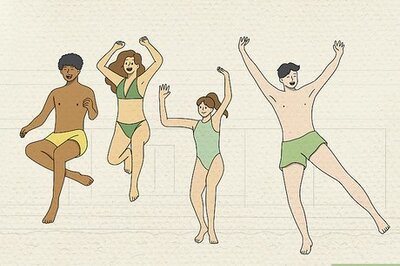
views
Miami: Two US astronauts wearing what NASA assured are "healthy" spacesuits began a spacewalk on Saturday to lay cable outside the International Space Station, after an equipment failure briefly delayed the mission.
The spacewalk officially began at 7:45 am (local time) when Barry "Butch" Wilmore and flight engineer Terry Virts placed their suits on internal battery power, NASA said. Moments later, the pair -- each carrying two suitcase-like bags of cable and gear -- floated outside the airlock to begin the first of several spacewalks aimed at preparing the orbiting outpost for the arrival of US commercial crew capsules, bringing astronauts to low-Earth orbit in the coming years.
Initially planned for Friday, the spacewalk was postponed by a day to allow NASA more time to wrap up an investigation into a problem with a piece of equipment inside certain spacesuits. The breakdown in the fan pump separator -- which helps control the suit's temperature -- in two of the American spacesuits was part of the same system that failed in 2013 when water flooded the helmet of a spacewalking Italian astronaut, nearly drowning him.
In December, when astronauts were doing spacesuit maintenance, they found that the fan pump separator in one suit did not speed up as expected. The same problem with another spacesuit was detected in January. A replacement part that was on board the space station was installed in the suit Virts is wearing, and a new spacesuit was shipped to the space station for Wilmore. NASA commentator Rob Navias said early on Saturday that both suits are "healthy" and in good working order.
"All suit systems are reported to be in excellent condition," Navias said. The spacewalk will be the 185th in the history of the space station, and is scheduled to last about six and a half hours. The duo's next spacewalk is set for Wednesday, followed by another on Sunday, with the goal of routing a total of 364 feet (110 meters) of cable.
These and several more outings in the coming months are designed to prepare the station and the robotic arm for a pair of international docking adapters (IDAs), which will be delivered later this year. When the new docking ports are eventually completed, up to two cargo ships and two crew ships will be able to latch on to the space station at the same time.
Boeing has said it hopes to send an astronaut and pilot for the first time in late 2017 to the International Space Station, aboard its crew capsule called CST-100.

















Comments
0 comment